Meeting of the Major Economies Forum on Energy and Climate in L’Aquila, Italy where a global partnership to advance low-carbon technologies was launched. This global partnership evolved into the Clean Energy Ministerial.
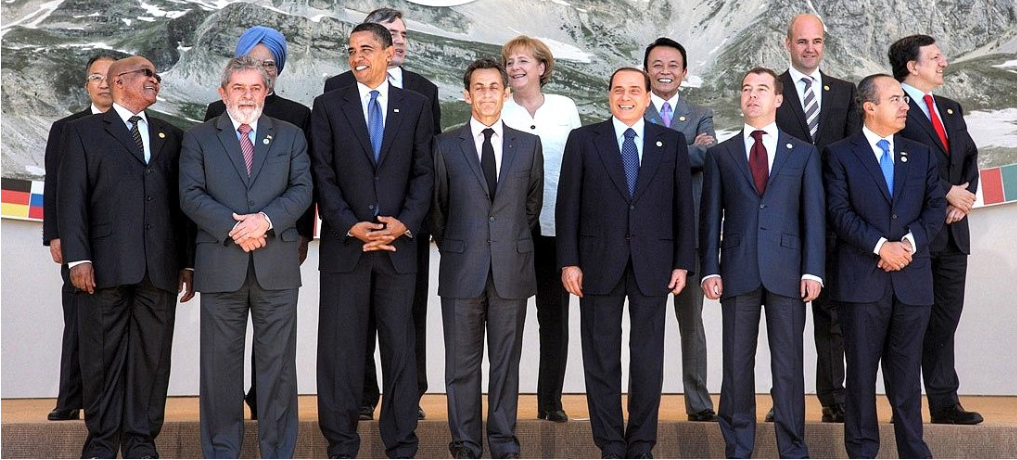
15 years ago, energy leaders had a vision to mobilise international clean energy collaboration to tackle one of the world’s biggest challenges: the transition to clean energy. From this vision, the Clean Energy Ministerial (CEM) was born, bringing together the most ambitious governments and energy actors to take concrete actions to advance clean energy together.
Leaders coming together to enact change Bringing coalitions to enact action
Its annual Ministerial meeting provides political guidance from Energy Ministers on priority outcomes and helps to mobilise resources for action.
This is combined with year-round technical initiatives and campaigns, coalitions of technical experts from governments, industry and international organisations tasked with implementing the actions needed to address the most pressing clean energy challenges.
Meeting of the Major Economies Forum on Energy and Climate in L’Aquila, Italy where a global partnership to advance low-carbon technologies was launched. This global partnership evolved into the Clean Energy Ministerial.

The 1st Clean Energy Ministerial took place in Washington DC, US, with 24 Energy ministers in attendance. 11 new initiatives were launched at the ministerial, reflecting the biggest priorities identified by ministers.
Initiatives launched: SEAD, Global Superior Energy Performance Partnership, ISGAN, EVI, CESC, CCUS, MSWWG, Sustainable Development of Hydropower Initiative, Multilateral Bioenergy Working Group, Solar and LED Energy Access Program, C3E
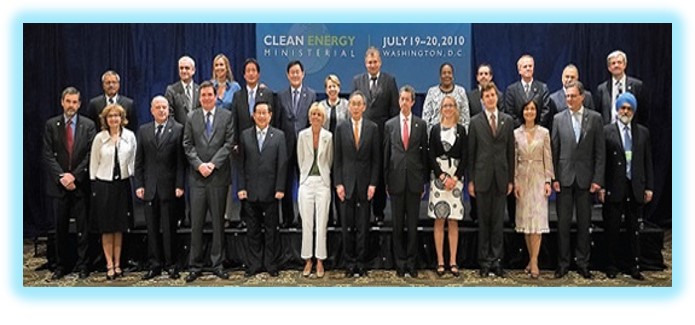
CEM2 was hosted by the UAE in Abu Dhabi. The meeting focused on 3 themes: smart policies for clean energy supply, energy efficiency, and strategic deployment of public finance.
Four roundtables were held, bringing together the public and private sectors to discuss renewable energy scaleup, sustainable cities, technologies and business models for energy efficiency, and utility scale energy efficiency. A public forum highlighting women’s contributions and leadership in the clean energy sector was also held.
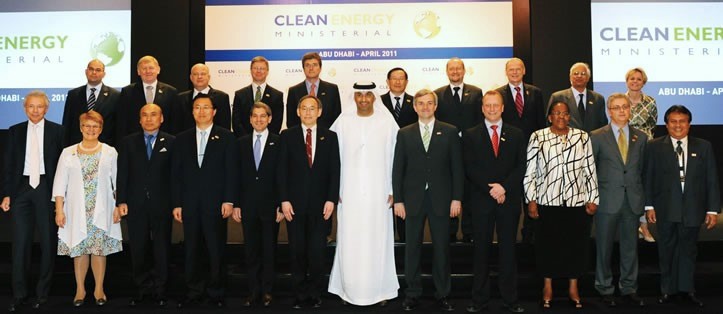
The United Kingdom hosted CEM3 in London. CEM3 was co-located with the high-level group of the United Nations Sustainable Energy for All (SE4All) initiative, with UN Secretary General Ban Ki-Moon giving remarks via telephone.
Initiatives launched: Global LEAP, 21st Century Power Partnership, Global Sustainable Cities Network
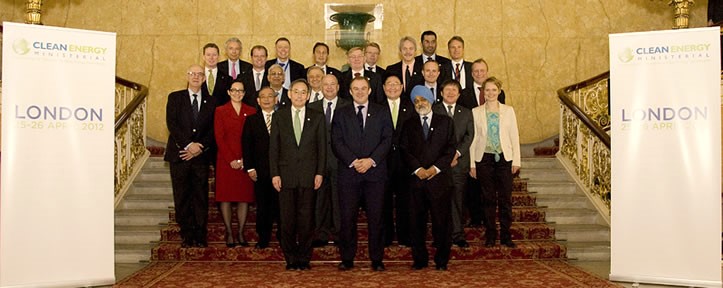
CEM4 was hosted by India in New Delhi. This meeting included six public-private roundtables on solar PV, clean vehicle adoption, power markets in emerging economies, renewable policy and finance, energy management systems, and mini grid development. An innovation showcase was held on the sidelines of the meeting, featuring over 40 industry booths that demonstrated new technologies developed to help accelerate the deployment of clean energy.
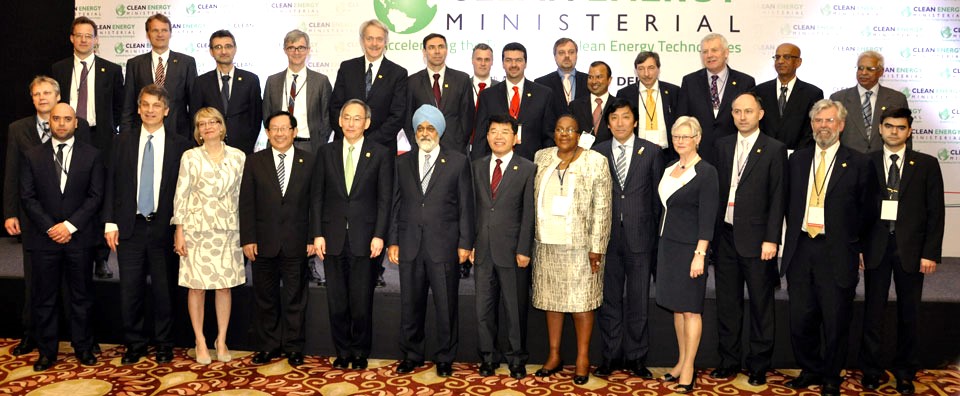
South Korea hosted CEM5 in Seoul. The meeting centred around four key areas: energy supply, energy efficiency, integration, and human capacity. International organisations, including the IEA, IRENA and the International Partnership for Energy Efficiency Cooperation joined the meeting as official observer organisations. CEM5 also held a Model CEM programme, bringing university students to represent CEM members in simulated plenary sessions.
Initiatives launched: Market Accessibility of Clean Energy Products, Clean Energy Finance, and the Energy-water Nexus.
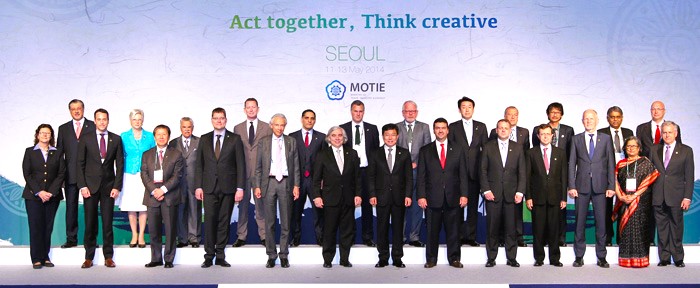
CEM6 was hosted by Mexico in Merida. At CEM6, the decision to launch “CEM 2.0” was taken. Additionally, the existing Clean Energy Solutions Centre was scaled up following its initial success providing policy assistance to more than 80 countries. The Kingdom of Saudi Arabia joined the CEM as an official member at CEM6.
Initiatives launched: Global Lighting Challenge, Power System Challenge
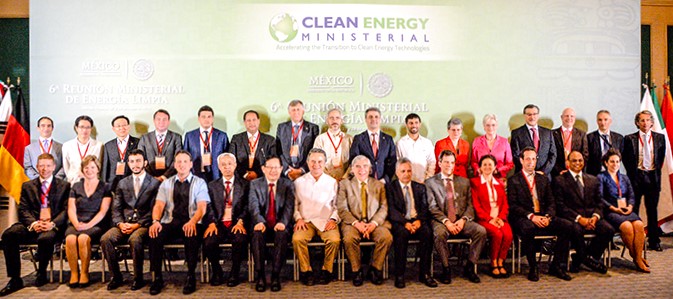
The United States hosted CEM7 in San Francisco. This ministerial meeting marked the establishment of a multilateral CEM Secretariat hosted by the IEA. Two new campaigns, the corporate sourcing of renewables, energy management campaign, and advanced cooling challenge, were also launched at CEM7 and the first symposium on women in clean energy was held.
Initiatives launched: Corporate Sourcing of Renewables Campaign, Energy Management Campaign, Advanced Cooling Challenge
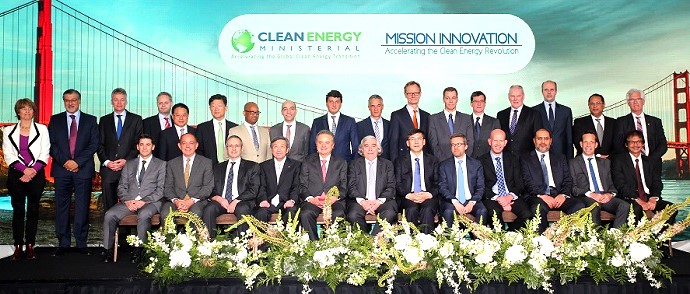
CEM8 took place in Beijing with China as hosts. CEM8 was the first ministerial meeting held since the formation of the new CEM Secretariat. It featured a technology and innovation theatre, which brought innovators, scientists and entrepreneurs to the ministerial to showcase innovations in clean energy deployment.
Initiatives launched: Investment and Finance Initiative, Long-term Energy Scenarios Campaign, Equal by 30 Campaign, CCUS Initiative, Power System Flexibility Campaign, Distributed Generation Campaign
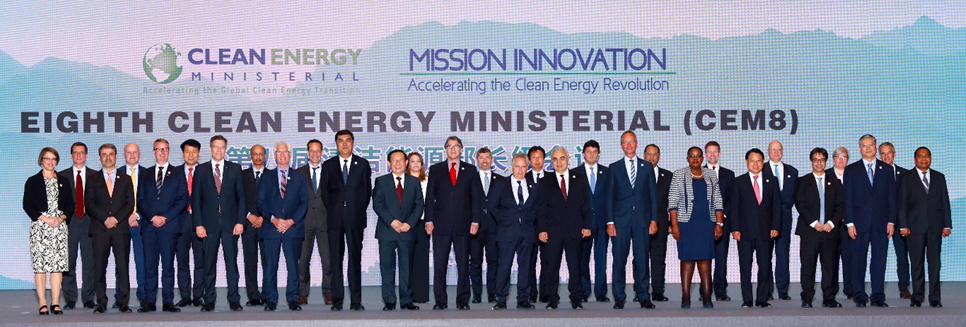
CEM9 took place in Copenhagen, Denmark and was co-hosted by Denmark, Sweden, Norway, Finland, the European Commission and the Nordic Council under the theme Energy Integration and Transition: towards a competitive and innovative low carbon economy.
Initiatives launched: Nice Future, RGEI
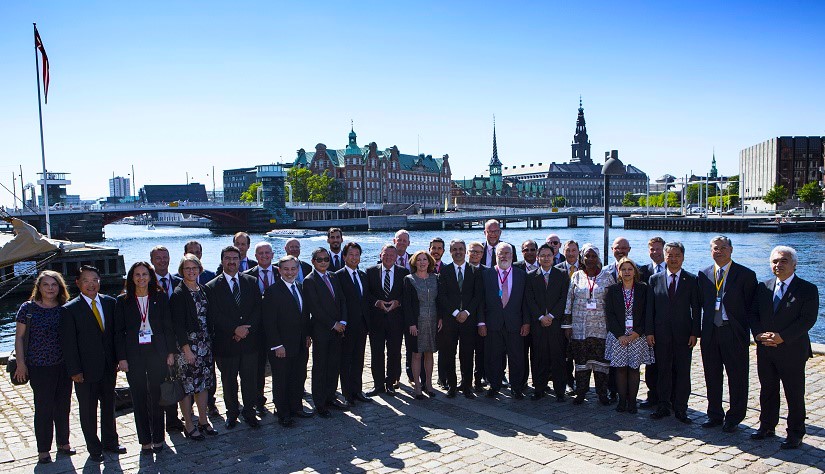
Canada hosted CEM10 in Vancouver. CEM10 hosted the first CEM youth forum, bringing together young people from nearly all CEM member countries. The Equal by 30 Campaign also celebrated reaching 100 signatories at CEM10.
Initiatives launched: Hydrogen Initiative, Flexible Nuclear Campaign
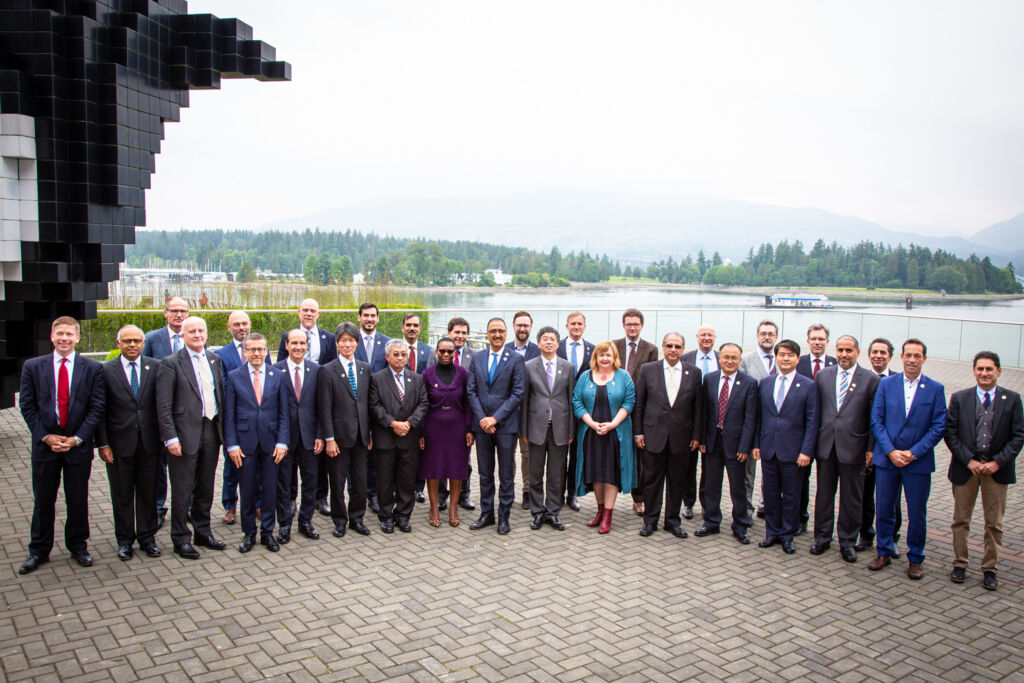
The Kingdom of Saudi Arabia hosted CEM11, the first fully virtual ministerial meeting and the first meeting to be held alongside the G20 Energy Ministerial. This ministerial meeting was attended by a record number of ministers and viewed by over 25,000 people.
Initiatives launched: Biofuture Platform Initiative, Drive to Zero Campaign
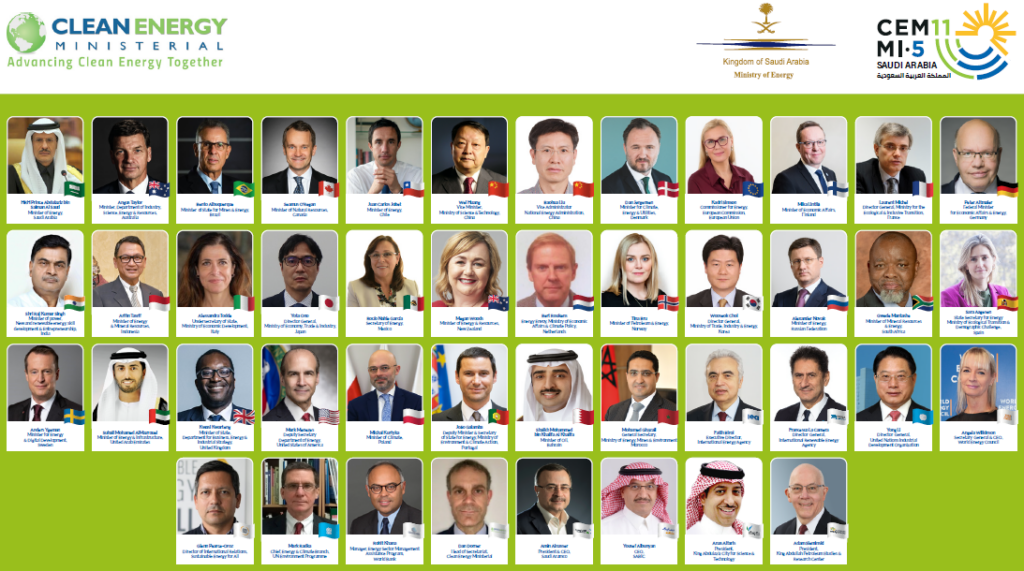
CEM12 was hosted virtually by Chile. This ministerial included over 40 side events, with more than 250 high-level speakers representing over 40 countries. The meeting welcomed 150,000 participants from over 100 countries.
Initiatives launched: Industry Deep Decarbonisation Initiative, Ports Coalition, Empowering People Initiative, Biofuture Campaign
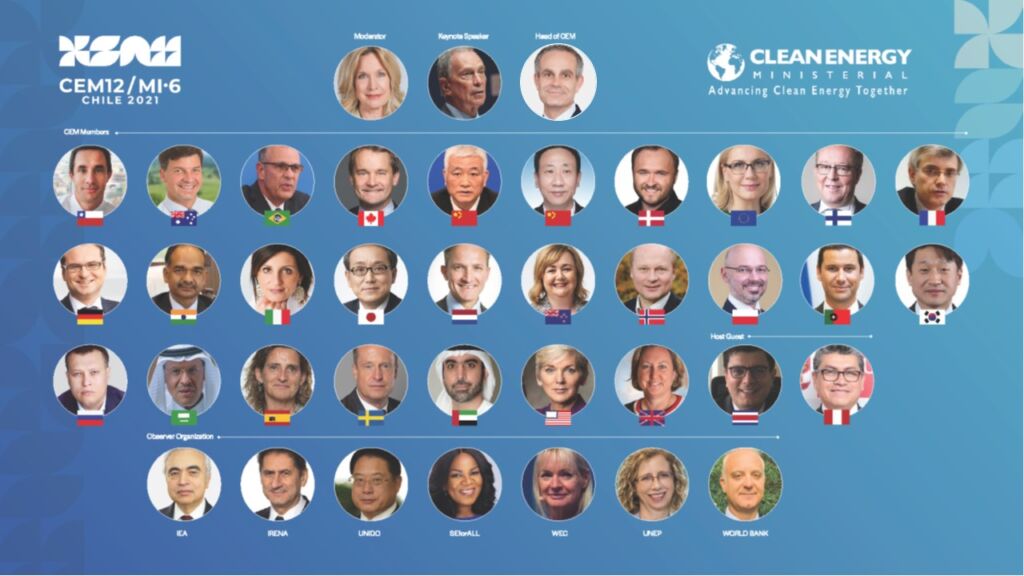
The United States hosted CEM13 in Pittsburgh. The meeting was held as part of the Global lean Energy Action Forum (GCEAF) and welcomed over 5000 in-person participants. CEM13 marked the launch of the Pittsburgh Action Pact, a multi-sectoral roadmap to reach net-zero.
Initiatives launched: Transforming Solar initiative, RISE3
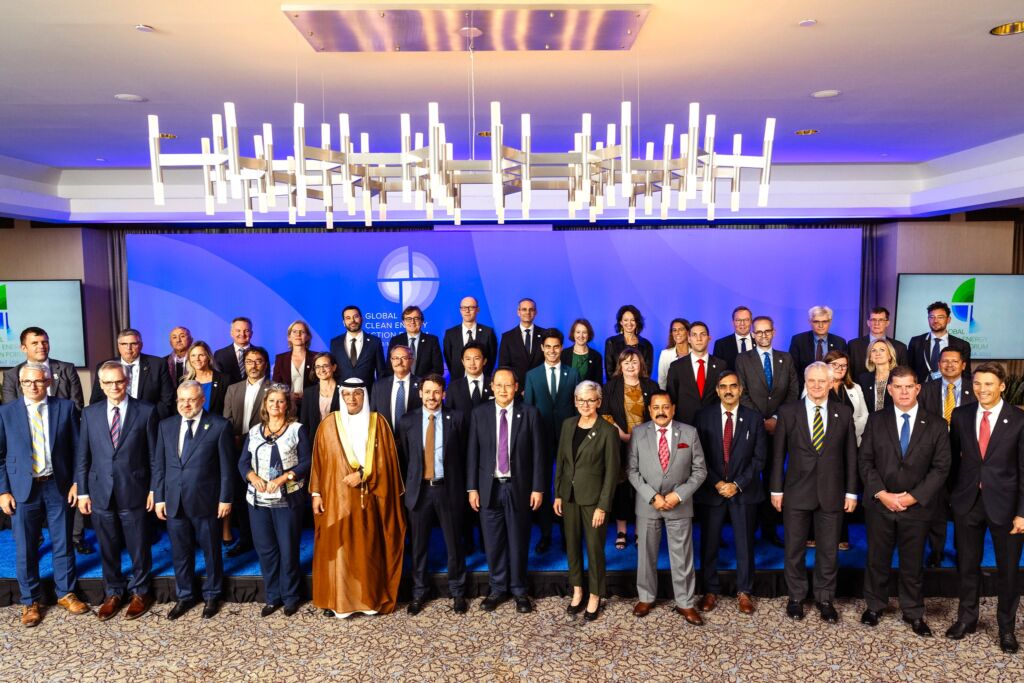
India hosted CEM14 in Goa. CEM14 was the first in-person ministerial meeting to be held alongside the G20 Energy Ministerial. Over 80 side events and high-level roundtables took place at the meeting.
Initiatives launched: CEM Hubs Initiative, International Hydrogen Trade Forum

CEM15 will be hosted by Brazil in Foz do Iguaçu. This ministerial meeting will take place from 30 September to 3 October and will also take place alongside the G20 Energy Ministerial.
Notifications